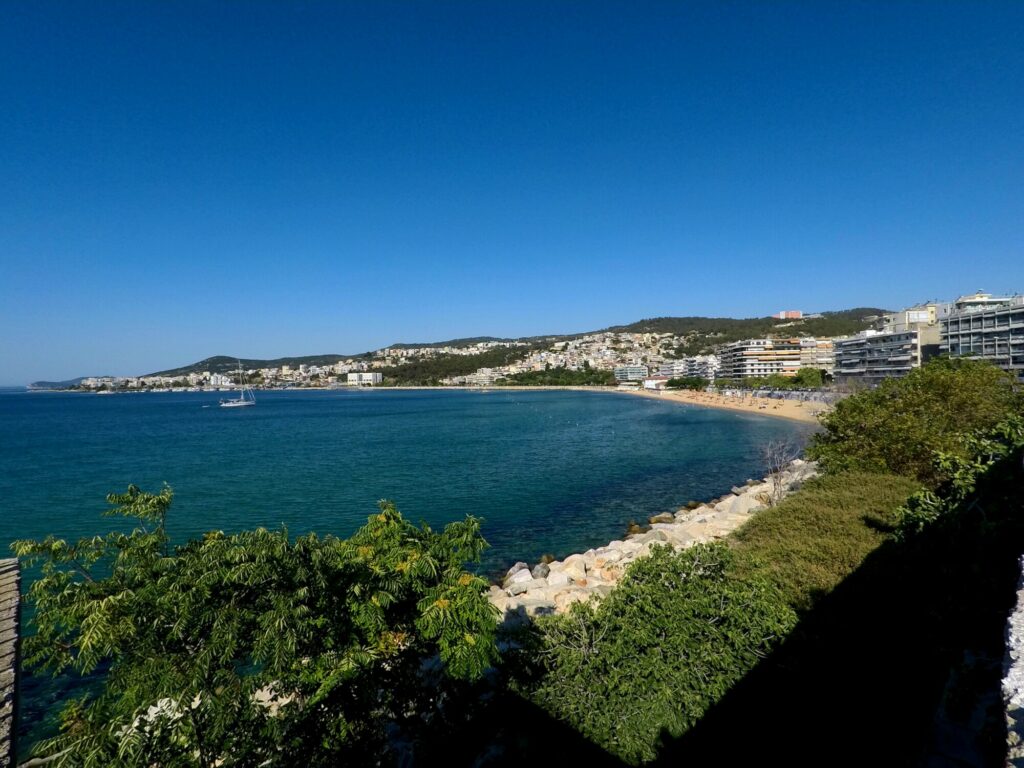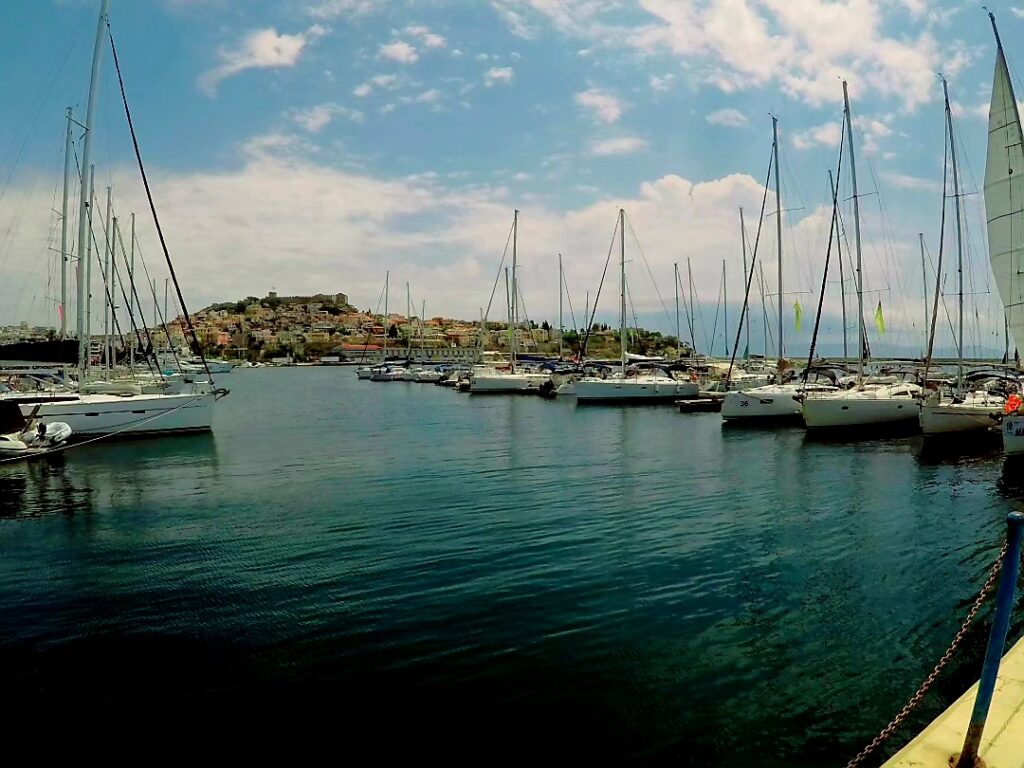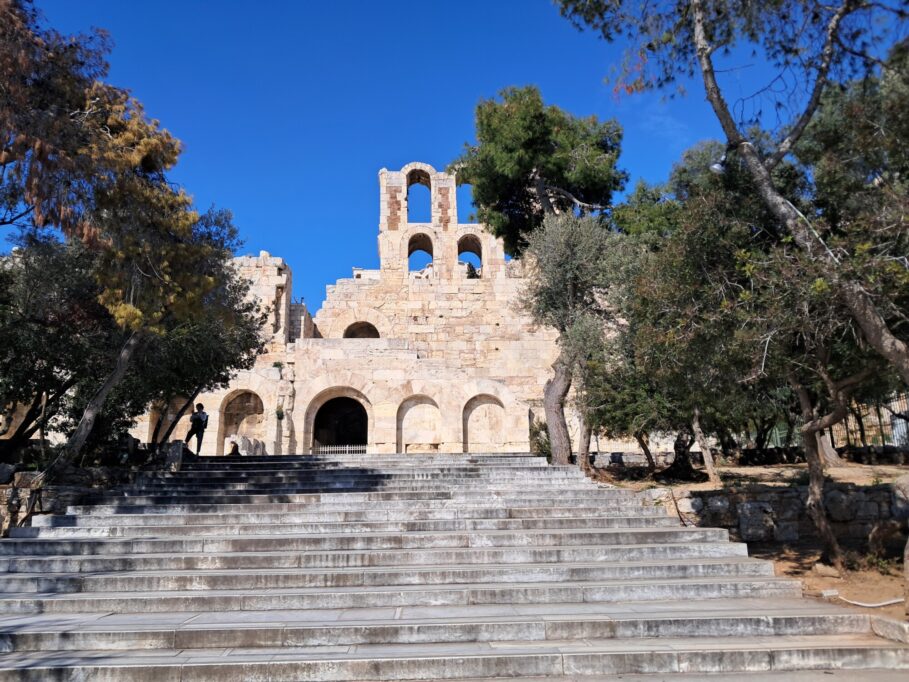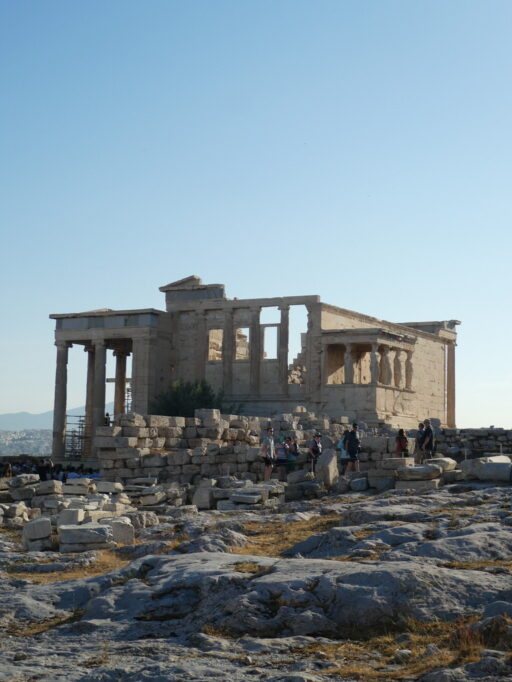Kavala Greece Travel Guide A Vagabond Life
Nestled along the northern shores of the Aegean Sea, Kavala is a picturesque city that seamlessly blends ancient history with modern charm. Often referred to as the “blue city” due to its stunning coastal views and azure waters, Kavala is a hidden gem waiting to be discovered by travelers. Founded in the 7th century BC, this vibrant port city boasts a rich tapestry of cultural influences, having been shaped by Thracian, Macedonian, Roman, Byzantine, and Ottoman civilizations.
As you wander through Kavala, you’ll encounter a captivating array of historical landmarks, from the well-preserved aqueduct known as Kamares to the imposing Kavala Castle that offers panoramic views of the city and the sea. The city’s old town, Panagia, invites you to stroll through its narrow, winding streets lined with traditional houses, charming cafes, and vibrant markets.
Beyond its historical allure, Kavala is a gateway to some of Greece’s most beautiful beaches and scenic landscapes. The nearby island of Thassos, with its pristine beaches and lush greenery, is easily accessible and perfect for a day trip. Kavala’s lively waterfront, bustling with tavernas serving fresh seafood and local delicacies, ensures that visitors can indulge in the culinary delights of the region.
Whether you’re a history enthusiast, beach lover, or foodie, Kavala offers a diverse range of experiences that promise to captivate and inspire.
Map Kavala Greece
Getting To Kavala Greece
Getting to Kavala, Greece: Your Complete Travel Guide
Kavala, a charming port city in northern Greece, offers a unique blend of historical allure and coastal beauty. Whether you’re planning a relaxing beach vacation, a cultural exploration, or a combination of both, understanding how to get to Kavala is essential for a smooth and enjoyable journey. Here’s a detailed guide to help you reach this picturesque destination.
By Air
Kavala International Airport “Alexander the Great” (KVA): The primary gateway to Kavala is the Kavala International Airport, named after Alexander the Great. Located about 30 kilometers from the city center, this airport serves both domestic and international flights, making it a convenient entry point for travelers.
- International Flights: During the peak summer season, several airlines operate direct flights to Kavala from major European cities, including Vienna, Munich, and London. These seasonal connections make it easier for travelers from various parts of Europe to reach Kavala.
- Domestic Flights: Regular flights connect Kavala with Athens and Thessaloniki, offering quick and efficient access from other Greek cities.
Getting to the City Center from the Airport:
- By Bus: Public buses operated by KTEL connect the airport with Kavala’s city center. The journey typically takes around 40 minutes.
- By Taxi: Taxis are available outside the terminal and offer a more direct route to your destination, with a travel time of approximately 30 minutes.
- By Car: Car rental services at the airport allow for flexible travel around Kavala and its surrounding areas.
Train
Greek Railways (OSE): While Kavala is not directly connected to the national rail network, you can travel to nearby cities such as Thessaloniki by train and then continue your journey to Kavala.
- From Thessaloniki: Trains from Thessaloniki to Drama are frequent, and from Drama, you can take a bus or taxi to Kavala, which is about 40 kilometers away.
Bus
Intercity Buses (KTEL): KTEL is the main intercity bus service provider in Greece, offering an efficient and affordable way to travel to Kavala from various parts of the country.
- From Thessaloniki: Multiple daily KTEL buses run from Thessaloniki to Kavala, with a journey time of approximately 2 hours. Buses are comfortable and well-maintained, making this a popular option for travelers.
- From Athens: Buses from Athens to Kavala are available, though this journey takes around 7 hours. It is advisable to book tickets in advance, especially during peak travel seasons.
Car
Driving to Kavala: Kavala is accessible by car via major highways, making it a convenient destination for those traveling from other parts of Greece or neighboring countries.
- From Thessaloniki: Take the E90 highway west from Thessaloniki, following signs to Kavala. The drive takes approximately 1.5 to 2 hours, offering scenic views along the way.
- From Athens: Drive north via the E65 and E90 highways. The trip takes around 6 to 7 hours, depending on traffic and road conditions.
Parking in Kavala: Parking in Kavala’s city center can be challenging, especially during the busy tourist season. Public parking lots and street parking are available, but it’s advisable to check parking options in advance.
By Ferry
Ferry Services: Kavala is also accessible by ferry from the nearby island of Thassos. Ferries run regularly between the port of Kavala and Thassos, making it easy to combine a visit to the island with a stay in the city.
- From Thassos: The ferry ride from Thassos to Kavala takes about 35 minutes. This option provides a scenic and pleasant journey, with beautiful views of the Aegean Sea.
Conclusion
Reaching Kavala is straightforward thanks to its well-connected transportation options. Whether you choose to fly into Kavala International Airport, take a train and bus from Thessaloniki, or drive through scenic routes, each mode of travel offers its own advantages. Once you arrive, Kavala’s charm and beauty await, promising a memorable experience in this captivating Greek city.
Getting Around Kavala Greece
Kavala, perched on the northern coast of Greece along the Aegean Sea, is renowned for its stunning seaside vistas and historic charm. As with many Mediterranean cities, Kavala presents its own unique challenges and opportunities when it comes to getting around. Here’s a comprehensive guide to help you navigate this beautiful city, keeping in mind its distinctive topography and transport options.
Walking
Exploring on Foot: Kavala’s cityscape is characterized by its steep, hilly terrain, especially in the old town area. This provides both challenges and rewards for those who prefer exploring on foot.
- Old Town (Panagia): The historic district of Panagia is a labyrinth of narrow, winding streets that ascend from the harbor to the top of the hill where the Kavala Castle is situated. Exploring this area on foot is the best way to appreciate its traditional architecture, charming squares, and picturesque views. However, be prepared for a significant amount of uphill walking. Comfortable shoes and a good level of fitness are advisable.
- City Center: The flat areas around the port and city center are more pedestrian-friendly. This includes the bustling waterfront promenade and the commercial streets where you’ll find shops, cafes, and restaurants.
Public Transportation
1. Buses (KTEL): Public buses in Kavala are operated by KTEL, providing an efficient way to travel both within the city and to nearby regions.
- Local Routes: Kavala’s local buses cover major routes throughout the city, including the steep areas and suburbs. Buses are a good option for those looking to avoid the physical strain of climbing the city’s hills.
- Regional Routes: KTEL also operates regional services connecting Kavala with other towns and cities in northern Greece. These buses can be a convenient option if you’re planning to explore beyond Kavala.
2. Taxis: Taxis are readily available throughout Kavala and offer a more comfortable and direct mode of transport, especially for navigating the city’s steep inclines.
- Availability: Taxis can be hailed on the street, booked via phone, or through various mobile apps. They are ideal for reaching specific destinations quickly and avoiding the effort of walking up steep streets.
- Fares: Taxi fares are metered, and additional charges may apply for services such as airport transfers or trips during nighttime hours. Always check the fare before starting your journey.
Car Rentals
1. Driving in Kavala: Renting a car provides flexibility and convenience, particularly if you plan to explore areas outside the city.
- Steep Terrain: Kavala’s hilly landscape means that driving can be challenging, especially in the narrow, winding roads of the old town. Exercise caution when driving in these areas, and be aware of limited parking options.
- Parking: Parking can be difficult in the city center due to narrow streets and limited space. Public parking lots are available, but it’s often easier to find parking on the outskirts and walk into the center.
Conclusion
Navigating Kavala presents a mix of charming challenges and delightful experiences. The city’s steep inclines offer stunning views and a unique character but require some effort to navigate, especially in the historic old town. Public transportation, taxis, and car rentals provide practical options for managing the hilly terrain, while biking and walking offer more immersive ways to experience the city’s charm. Whether you choose to explore on foot, by vehicle, or by bike, Kavala’s picturesque streets and stunning vistas ensure a memorable journey through this enchanting Greek city.
Things To See & Do In Kavala Greece
The Top Things to See in Kavala, Greece
Kavala, with its rich tapestry of history and stunning coastal scenery, offers a range of attractions that captivate both history enthusiasts and casual travelers. Here are the top five must-see sights in Kavala, each brimming with historical significance and modern charm.
Kavala Castle
The imposing Kavala Castle, perched on a hilltop overlooking the city and the Aegean Sea, is a testament to the city’s strategic importance throughout history. Originally constructed by the Byzantine Emperor Justinian I in the 6th century, the castle has been expanded and modified by various rulers, including the Ottomans and the Venetians.
Highlights: The castle complex includes a series of defensive walls, towers, and bastions, offering panoramic views of Kavala and its surroundings. Visitors can explore the well-preserved fortifications, including the imposing main gate and the Ottomans’ old arsenal. The castle’s elevated position also provides stunning vistas of the city’s coastline and the Thermaic Gulf. Walking through the castle grounds gives a tangible sense of Kavala’s historical layers, from Byzantine to Ottoman periods. The site often hosts cultural events and exhibitions, adding to its appeal.
The Roman Aqueduct (Kamares) Kavala
The Roman Aqueduct (Kamares)
The Roman Aqueduct, commonly known as Kamares, is an engineering marvel that showcases Kavala’s historical significance as a major Roman city. Built in the 15th century by the Ottoman ruler Sultan Bayezid II, the aqueduct was designed to supply water to the city from the nearby mountains.
Highlights: The aqueduct features a series of elegant arches that span a total length of around 1 kilometer, making it one of the longest and most impressive ancient structures in Greece. The well-preserved arches create a striking visual contrast against the modern city backdrop. Visitors can walk along the base of the aqueduct and admire its grandeur up close. The surrounding area has been landscaped to enhance the structure’s prominence, making it a popular spot for photographs. The aqueduct not only highlights the advanced engineering of the Roman period but also serves as a reminder of Kavala’s long and varied history.
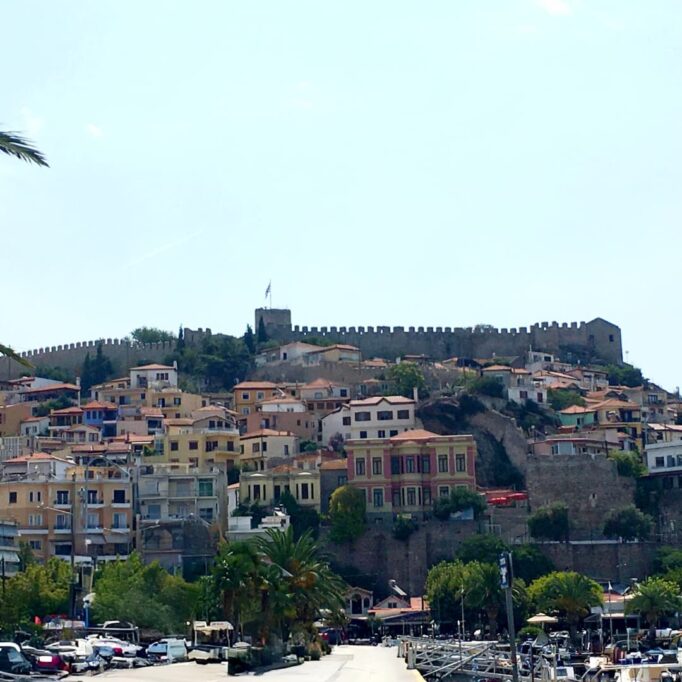
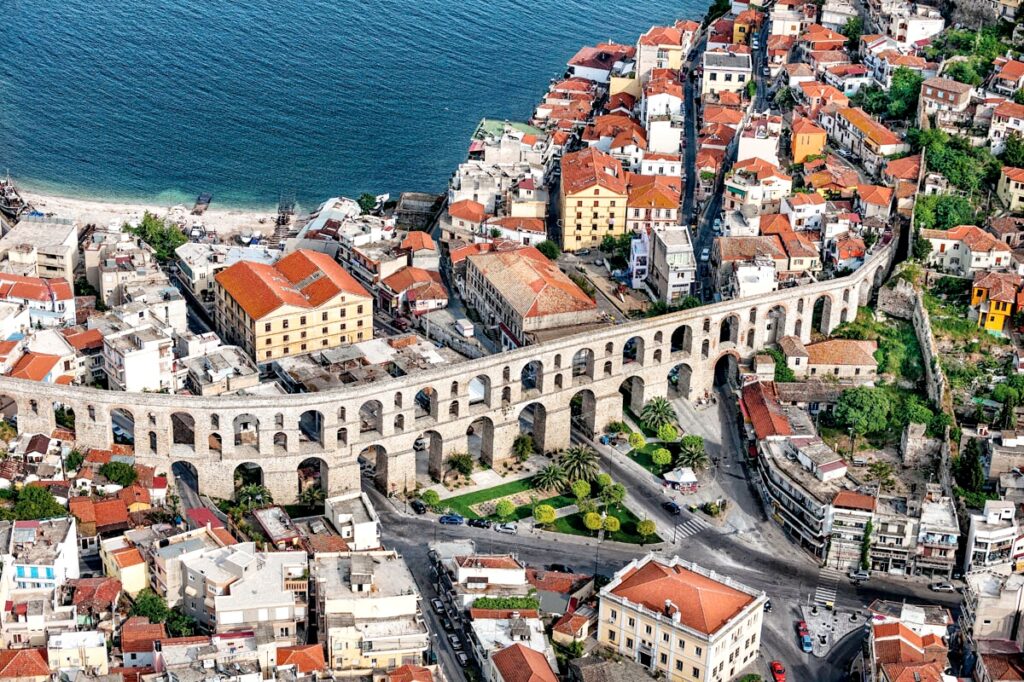
The Archaeological Museum of Kavala
The Archaeological Museum of Kavala is a treasure trove of artifacts that offer a deep dive into the region’s rich history, from ancient Macedonia to the Byzantine era. Established in 1934, the museum houses a diverse collection of artifacts excavated from the surrounding areas, including ancient Amphipolis and Philippi.
Highlights: The museum’s exhibits include classical sculptures, pottery, and inscriptions, with notable highlights such as the impressive marble statues from Philippi and the intricate mosaic floors from ancient Macedonian villas. The museum also features artifacts from the Hellenistic and Roman periods, providing insight into the daily lives and religious practices of ancient inhabitants. The well-curated displays are accompanied by informative descriptions that enhance visitors’ understanding of the region’s historical context. The museum’s modern facilities and engaging exhibits make it an essential stop for anyone interested in the ancient history of Kavala and its surrounding regions.
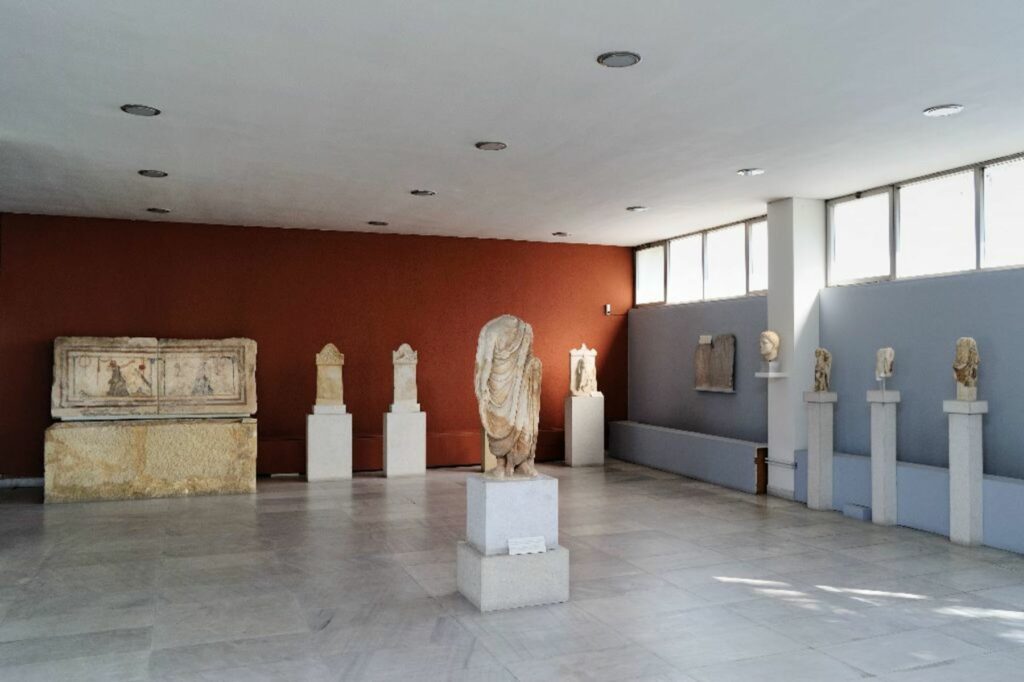
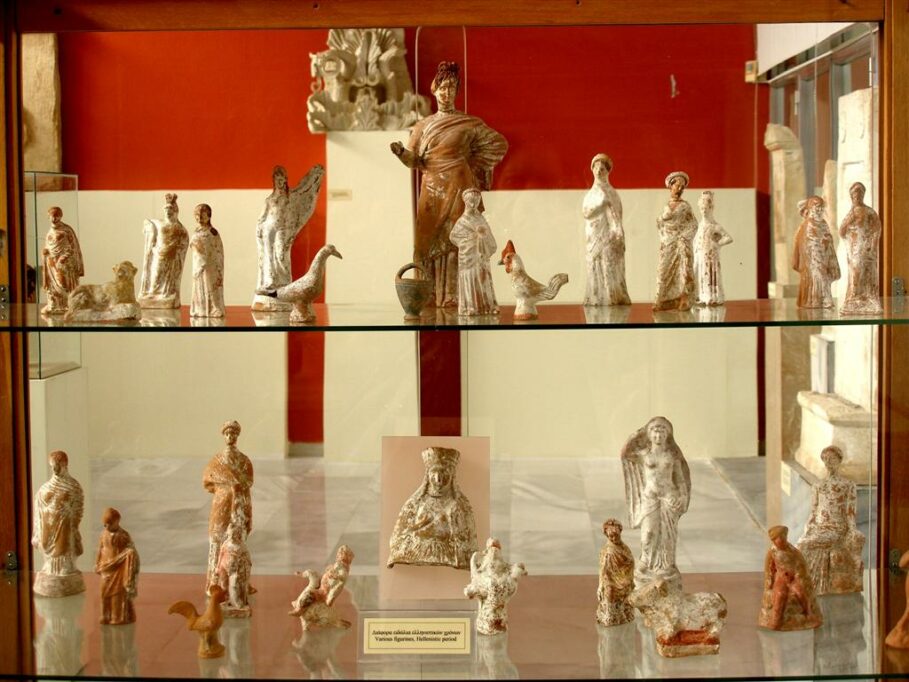
Kavala Imaret
Kavala Imaret: A Historical Gem and Cultural Hub
The Imaret, located in the heart of Kavala’s old town, Panagia, is one of the city’s most significant historical and architectural landmarks. Constructed between 1817 and 1829 by the Ottoman governor and philanthropist Kucuk Ali Efendi, the Imaret is a testament to the grandeur of Ottoman architecture and the period’s charitable ethos.
Historical Significance: Originally, the Imaret was established as a multi-purpose institution, including a mosque, a madrasa (school), and a charitable almshouse. It was designed to serve the local community by providing educational opportunities, religious services, and welfare to the poor. This multifunctional use reflects the Ottoman approach to urban planning, where such complexes played a central role in daily life and societal support.
Architectural Highlights: The Imaret’s design is characterized by its grand Ottoman architecture, featuring a large central courtyard with a majestic fountain, elegant arched windows, and a domed roof. The building’s intricate stonework and decorative elements showcase the skill and artistry of Ottoman architects and craftsmen.
Modern Use: In recent years, the Imaret has been meticulously restored and repurposed into a luxury boutique hotel. This restoration preserved its historical charm while integrating modern amenities. The building’s transformation into a cultural center also includes hosting art exhibitions, music performances, and cultural events, bridging the historical and contemporary aspects of Kavala.
Visitors to the Imaret can immerse themselves in its rich history while enjoying its current role as a luxurious retreat and cultural hub. Its blend of historical significance and modern functionality makes it a must-visit landmark for anyone exploring Kavala.
.
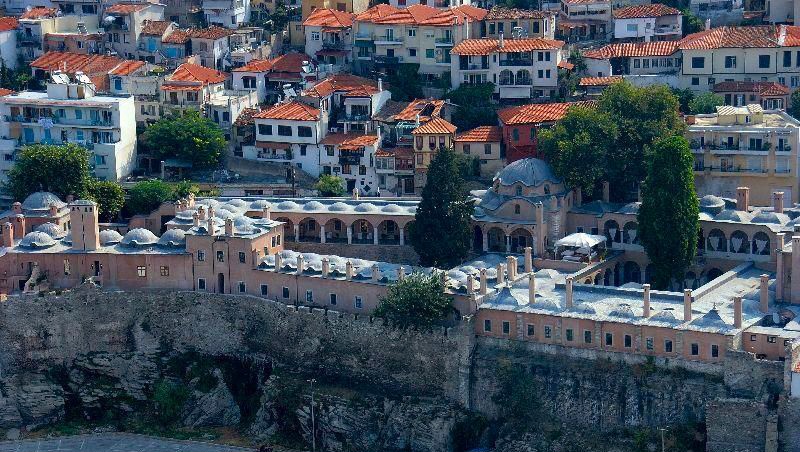
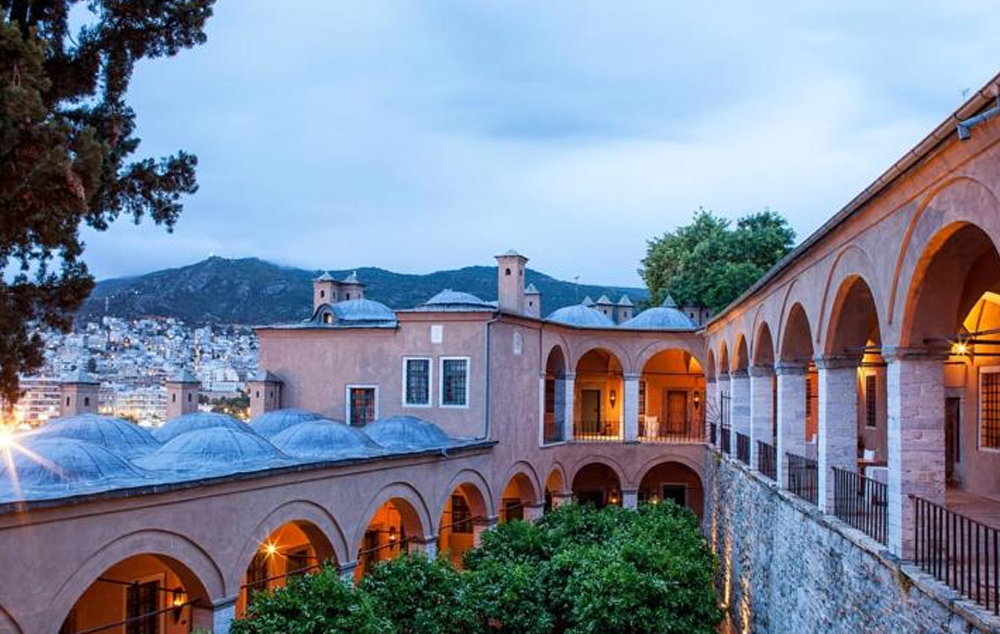
Kavala Philippi
Kavala Philippi: A Historic Treasure of Ancient Greece
The ancient city of Philippi, located near modern-day Kavala, is a remarkable archaeological site that offers a fascinating glimpse into Greece’s rich historical and cultural heritage. Founded in 356 BC by King Philip II of Macedon, the city was strategically positioned on the Via Egnatia, a major Roman road that linked Rome with the eastern provinces. Philippi flourished under Roman rule and played a significant role in the region’s history.
Historical Significance: Philippi is perhaps best known for the Battle of Philippi in 42 BC, where the forces of Mark Antony and Octavian defeated the armies of Brutus and Cassius, leading to the end of the Roman Republic and the rise of the Roman Empire. This battle marked a pivotal moment in Roman history, making Philippi a key historical site.
Highlights:
- The Ancient Theater: One of the best-preserved structures in Philippi, this Roman theater could seat up to 5,000 spectators. It showcases impressive architectural and acoustic design, and performances are occasionally held here, offering a unique experience.
- The Basilica of Philippi: This early Christian basilica, built in the 5th century AD, is notable for its size and the intricate mosaics that adorn its floors. It stands as a testament to the city’s transition from Roman to Byzantine rule.
- The Forum and Roman Baths: The remains of the forum, with its colonnaded streets and public spaces, provide insight into the city’s urban planning and social life. The Roman baths reveal the advanced engineering and bathing culture of the era.
Visitors to Philippi can explore these ancient ruins and appreciate their historical context, offering a rich and immersive experience into the past. The site’s blend of Macedonian, Roman, and early Christian elements makes it a compelling destination for history enthusiasts and casual tourists alike.
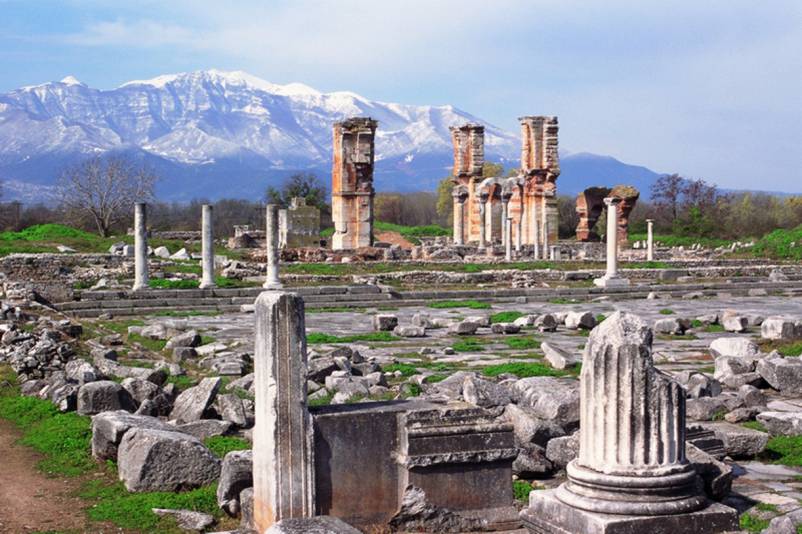
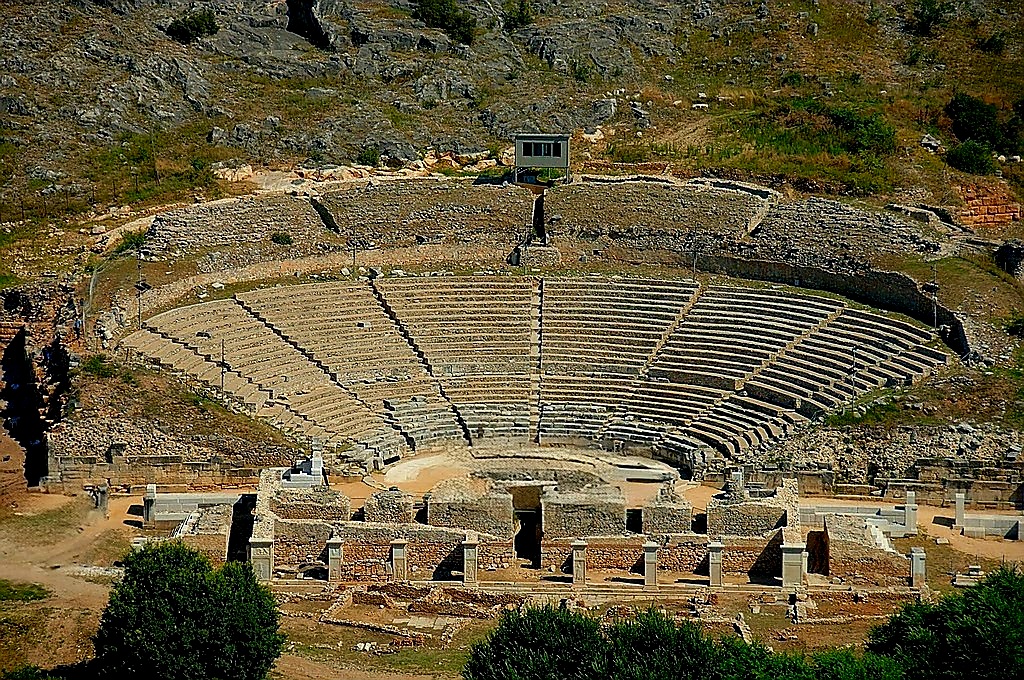
The Old Town (Panagia)
The Old Town (Panagia)
The Old Town, known locally as Panagia, is a historic neighborhood that provides a glimpse into Kavala’s past. Nestled on a hill overlooking the modern city, Panagia is characterized by its narrow, winding streets, traditional houses, and charming squares.
Highlights: Walking through Panagia feels like stepping back in time. The area is home to beautifully preserved Ottoman-era mansions, many of which have been converted into boutique hotels, cafes, and shops. Key landmarks include the 19th-century Imaret, an old Ottoman building that has been transformed into a cultural center and luxury hotel. The narrow alleys of Panagia lead to stunning viewpoints offering panoramic views of the city and the Aegean Sea. The area is also known for its vibrant atmosphere, with local artisans and cafes adding to its charm. Exploring Panagia allows visitors to experience the blend of historical architecture and modern life that defines Kavala.
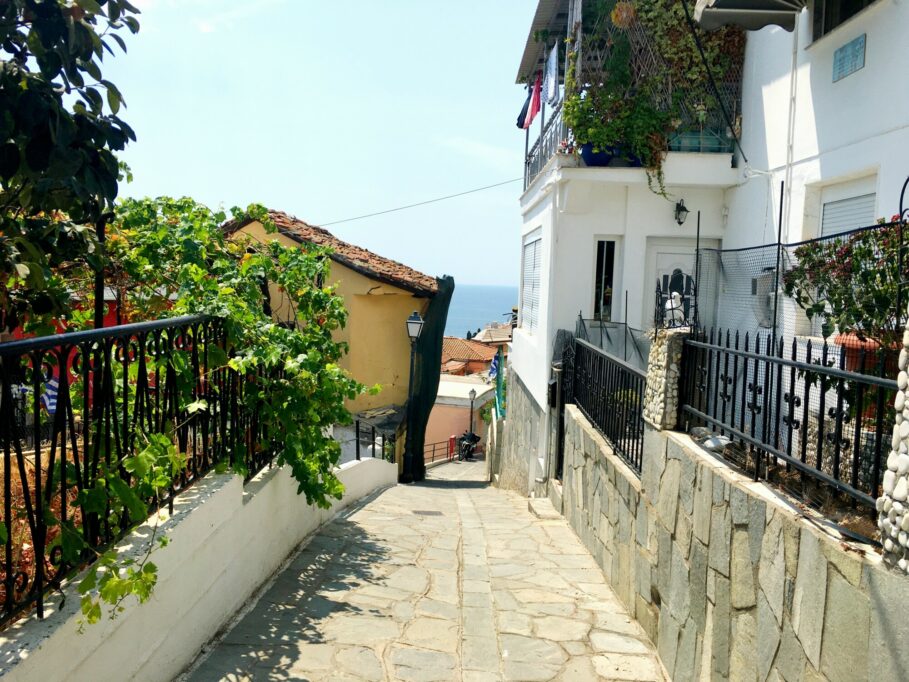
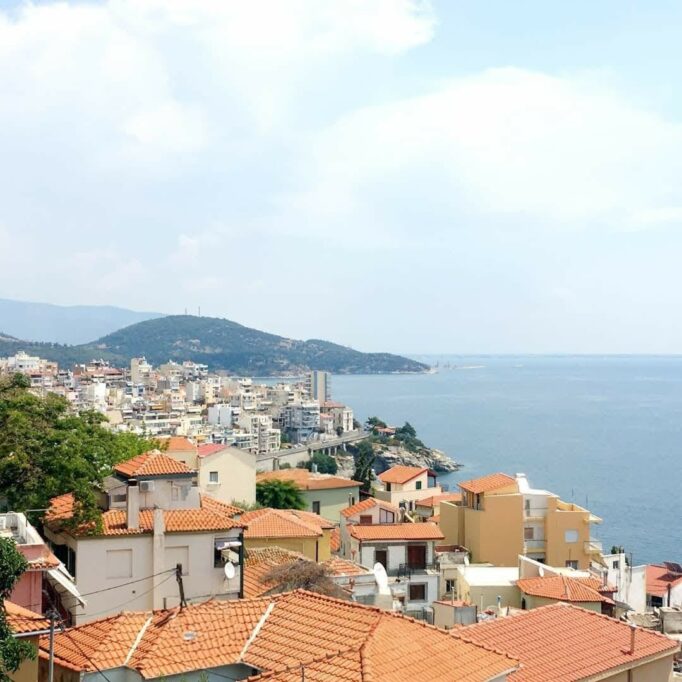
Kavala Beach
The main beach in Kavala, known as the “City Beach” or “Kavala Beach,” is a popular destination for sunbathers and swimmers. The sandy shoreline is well-maintained, providing a comfortable spot for lounging and enjoying the clear, turquoise waters. The beach is equipped with amenities such as sunbeds, umbrellas, and nearby cafes, making it easy to spend a full day by the sea. The shallow waters are ideal for families, while the beach’s location near the city center offers convenience for those looking to combine beach time with urban exploration.
Waterfront Promenade
The waterfront promenade, or “Esplanade,” is a lively hub lined with an array of restaurants, cafes, and bars. This area comes alive in the evenings with locals and tourists enjoying leisurely strolls, dining, and people-watching. The promenade offers stunning views of the harbor, with its colorful fishing boats and sailboats, and is a perfect spot to savor fresh seafood while watching the sunset over the Aegean. Whether you’re looking to relax on the beach or explore the vibrant waterfront, Kavala’s coastal area provides a delightful blend of natural beauty and urban charm.
Conclusion
Kavala’s diverse array of attractions offers a rich exploration of its historical and cultural heritage. From ancient fortifications and aqueducts to charming old town neighborhoods and museums, each site provides a unique window into the city’s past and present. Whether you’re wandering through the historic streets of Panagia, admiring the grandeur of the Roman Aqueduct, or soaking in panoramic views from the Kavala Castle, Kavala promises a memorable journey through time and culture.
